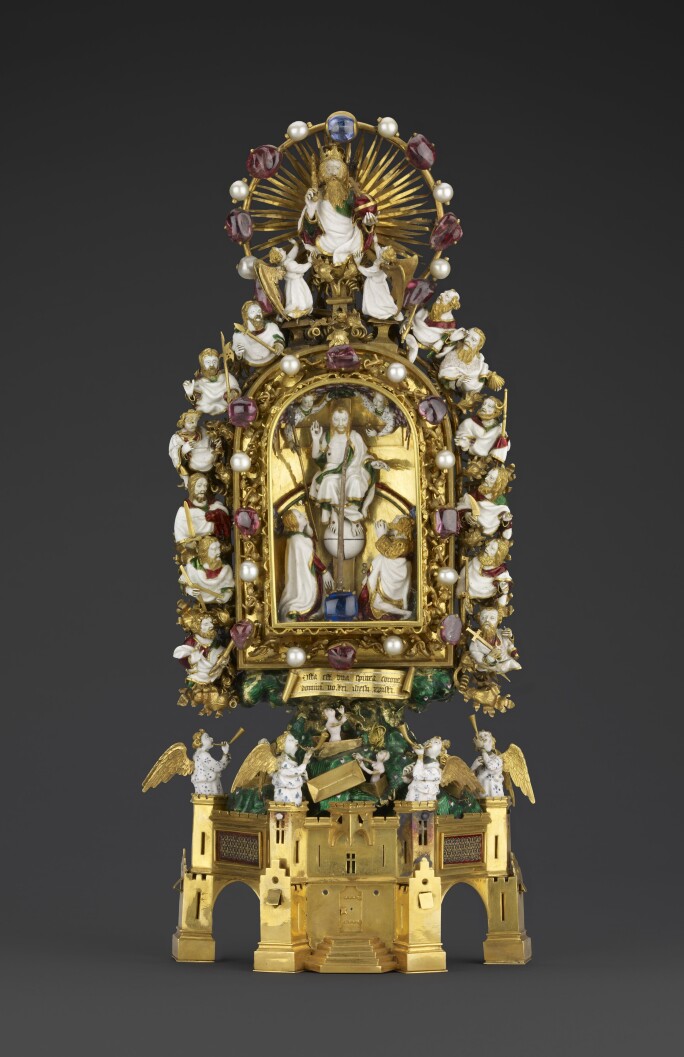One of the great shrines to Christianity, the Holy Thorn Reliquary has been cherished by a series of noble collectors and survived a forger’s sleight of hand
T he Holy Thorn Reliquary is a work of both ornate beauty and sublime significance. The grandeur and intricacy of the late-medieval French goldsmith’s craft is harnessed for the reverence of a single buckthorn – believed by many to be from the Crown of Thorns placed on the head of Jesus before the crucifixion. Dating from the 1390s, the reliquary’s design encompasses gold, enamel, rock crystal, pearls, sapphires and rubies. Its provenance includes some of the important royal collections in Europe and the work is now permanently housed in the British Museum. It has been described by one theologian as “a window into another world.”

The thorn enshrined within the work originated from the Crown of Thorns bought by King Louis IX of France in Constantinople in 1239. He also purchased fragments of the True Cross. In Paris these, and other relics, were displayed in the purpose-built Saint-Chapelle. After his death, Louis was canonized and now reliquaries relating to him can be found in several churches, including the Basilica of San Domenico in Bologna.

Although venerated by the faithful, reliquaries are often the subject of speculation, debate and mysterious sagas. Indeed, the Holy Thorn Reliquary’s prestigious history shrouds a despicable subplot: in the mid-19th century the work was switched for a copy by a Viennese antique dealer. For almost a century this intrigue remained undetected: when it arrived at the British Museum at the turn of the 20th century, curators believed that the piece was Spanish.

The reliquary is today one of the institution’s biggest draws. In 2011, it was a highlight of both the museum’s Treasures of Heaven show and the exhibition A History of the World in 100 Objects – an immensely popular collaboration between the BM and the BBC. “You never get to the end of the Holy Thorn Reliquary,” claims Neil MacGregor, former director of the British Museum. “It’s a theatre for the cosmic drama of salvation. It's a sermon on high medieval theology. And you could almost say it's a single-object museum, even if an incomparably lavish one.”

The value of a reliquary is twofold. They have, of course, spiritual value to believers; but also, as frequently created for wealthy patrons, they can be made of precious metals and decorated with gems. Historical significance and artistic merit often combine to create a considerable financial value. For instance, in July 2018, a 12th-century German reliquary casket sold at Sotheby’s London for £370,000, far exceeding its high estimate. That work – like the Holy Thorn Reliquary – featured ornate figures of the Apostles. And, in 2014, three reliquary busts of Pope Saint Sixtus II, St Agnes and St Ursula – including locks of the saints’ hair – sold for a total of £559,500 (total high estimate: £80,000).




